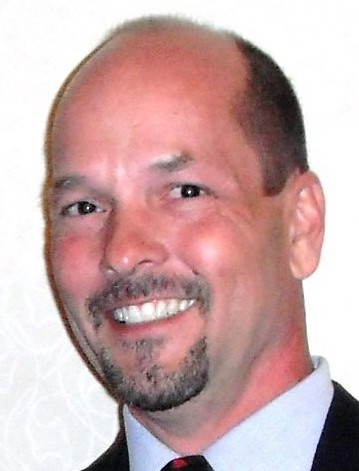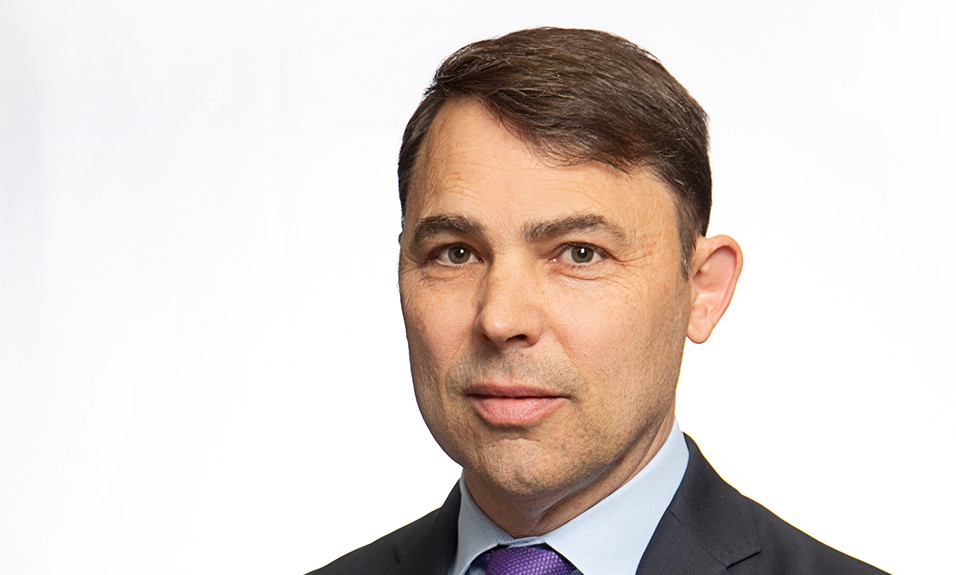Jerry Ehmann, clinical director of the Arizona-based center, says the emerging technique ART could be a “game changer” in treating trauma
By Jennifer Taylor
For Jerry Ehmann, LPC, LISAC, NCC, the role of trauma was never more apparent in the roots of addiction and mental health disorders than when, years ago, he worked as a clinician at the Youth Development Institute in Phoenix. The 84-bed residential locked campus provides intensive and specialized treatment for youths referred by the Arizona juvenile court system and other state agencies. Ehmann, who is in recovery, saw firsthand how trauma was a big part of the youths’ stories, and it was the reason why, he says, so many had been locked up in the first place.
When Ehmann later shifted to working with addiction, he again recognized how trauma was the primary cause for many of his clients.
“I realized more and more that substance use was just a coping mechanism for a lot of trauma,” he says.

Nowadays, Ehmann, clinical director at the behavioral health and residential treatment center Soberman’s Estate in Cave Creek, Ariz., is an outspoken proponent of an emerging practice—accelerated resolution therapy (ART)—which has delivered promising outcomes in the treatment of trauma, post-traumatic stress disorder (PTSD) and disorders including addiction, anxiety, depression, phobia, grief and abuse. ART is a form of psychotherapy with roots in existing evidence-based therapies such as eye movement desensitization and reprocessing (EMDR), but has been shown to achieve benefits for individuals more rapidly (usually in one to five sessions, according to researchers) and reportedly is efficient and relatively easy for clinicians to administer.
ART moves clients beyond being stuck in negative experiences and toward growth and positive changes. The result, research says, is that traumas and difficult life experiences are reprogrammed and stored in the brain so that they will no longer trigger strong emotions or physical reactions. One notable aspect of the treatment is that clients don’t have to talk about their traumas or difficult life experiences to achieve recovery, says Ehmann.
While researchers point out that more studies need to be done, they also say the client is always in control of what is happening. The treatment does not involve hypnotherapy; no medication is given in association with it; ART can be used for clients taking other medications; clients can choose whether to share distressing memories; the therapy involves no homework assignments; and clients don’t have to try to purposefully recall traumatic scenes between sessions.
Ehmann recently spoke with TreatmentMagazine.com, sharing his experiences using ART and why he believes the therapy is a “game changer” in the field.
Q: How long has Soberman’s Estate offered ART?
A: I came onboard at Soberman’s at the beginning of this year. I’ve been doing ART in treatment facilities for almost five years now. Prior to that, I’d been using EMDR and more traditional methods of treatment. ART does what I used to do as EMDR, in about a fifth of the time. The typical residential client has 28 days. And that’s if we can get 28 days from insurance. Using a protocol like EMDR takes five or six sessions to start seeing improvements, so I was uncomfortable using any kind of treatment that took more than one or two sessions. That’s the biggest difference.
In ART, I move stuff in one session typically on a traumatic event. We can clear physical sensations [and] negative images from a trauma event in one session, [based] on my personal experience.
Trauma can be like layers of an onion. We open up one trauma and we start working on it, and then all this other stuff comes up.”
—Jerry Ehmann, clinical director of Soberman’s Estate
Q: What is the typical outcome for individuals treated with ART?
A: In my experience, 90 to 95% of the people respond in one session to clear an event. We may clear an event that happened in early adulthood, and all of a sudden they’re starting to remember they had this childhood trauma that they’ve forgotten about. Trauma can be like layers of an onion. We open up one trauma and we start working on it, and then all this other stuff comes up and we can’t finish the trauma protocols and the personalized treatment. As one person told me just a few weeks ago: “It was like somebody opened Pandora’s box and told me I’m discharged.” I don’t want to be that guy. I’ve worked with people on four or five events, and it’s a 30-day period to clear out multiple childhood traumas or even some violent assaults that have happened in adulthood that might have been the trigger or the precipitating event that caused all of this alcohol and drug use.
Q: Why is ART considered “emerging?”
A: EMDR [has] 30-plus years of research and practice behind it. ART is at seven years or eight years [old and has] evidence-based [research available] for about the last four and a half years, so it’s still relatively new. Even the number of counselors that are trained in it is still a fraction of what we have for EMDR therapists.
Q: How is ART used at Soberman’s Estate?
A: Anybody who comes into our treatment facility goes through the assessment process. If we determine that there is some traumatic stress, or even anxiety, we can start working on that with the ART. As a matter of fact, I just had a client earlier today that came in [with] a lot of childhood trauma. So we’ll look at the timeline of the trauma and the drug use, because those things will correlate. And then we can start using ART to eliminate the images, the negative somatic experience when that recall happens on the event. We get rid of images, we get rid of negative sensations in the body, and we decrease the emotional attachment to the event.
Q: Walk me through that process with an individual.
A: [The process] is simpler for the client. All they really need is motivation to be able to hold a thought, and to be able to move their eyes back and forth. There’s not a lot of talking during the process. They see the event. Twice, we go through it, and we get rid of sensations as we go through the protocol. Then we create a new memory. I say a new memory, but we reimagine the experience and we see it differently. The facts don’t disappear. Keep the facts, remove the pain.

Q: How is ART impactful in treating addiction?
A: So, addiction is something that I don’t typically do with ART in one event. That takes several events because we’re really trying to restructure the cognitive processes. We look at triggers during the protocol. We try to create a new response.
The cravings are what we’re addressing as far as the emotions. Cravings excite emotion, mental process and physical response. With ART, we’re working on those three areas just like we would with any kind of therapy, but we’re doing it in a briefer session and in a briefer amount of time.
Q: From your perspective, what is the current state of trauma and post-traumatic stress in society in general?
A: What I’m seeing more of recently is that trauma isn’t as much about the assaults that I’m used to seeing. I work with first responders and [veterans, and] the trauma isn’t about significant events. The trauma I’m seeing more of is the grief that’s happening to a lot of people losing people who they didn’t get to say their final goodbyes to during this COVID pandemic. The trauma has shifted towards moods as opposed to events. I still work with events, but I’m also working a lot with grief, anxiety and depression.
Q: Are there people seeking ART treatment from current societal traumas?
A: Yes, to the pandemic. I’m working with somebody in the medical field right now who’s been working with COVID patients for a while. I think anybody in that work and first responders are really good at compartmentalizing for a while, until something blows the door off the compartment. And all of a sudden all this stuff comes out, and we need to address it. I suspect I’ll be seeing more nurses down the road as we come out of this thing.
I have not personally seen a lot of people from, for example, the [recent] civil unrest. But it’s not to say it’s not there. I know [with] trauma that it doesn’t have to be firsthand experience. Research has shown, for example, when the [2016 shooting] occurred in [the Pulse gay nightclub in Orlando in] Florida, it affected people across the country. A lot of people felt a traumatic stress from the event, even though they’re not near it and they don’t know the people. But what we know now is, [one reaction can be] people like me have been affected and therefore it affects me. Same thing shows up when you think of George Floyd and what happened with that. No relation, no correlation other than it is somebody like me. And I think we see it with our kids when they see a school shooting—that affects children across America, because those are kids like [them].
Q: Why do you believe this is an important treatment in the addiction field?
A: I have done the research that shows correlations between trauma and anxiety disorders, depressive mood disorders, bipolar and borderline personality disorders. If I had to choose between addiction or trauma, I’d take trauma, because if I can work on somebody’s trauma, maybe they don’t need to go use drugs or alcohol.
I told [teen patients] that if you learn the skills we’re trying to teach you now here, you may not be seeing me in 20 years in a substance [use] treatment center. … Whether it be abuse, neglect or physical or sexual abuse, they’ve had some sort of traumatic experience.”
—Jerry Ehmann
I learned that from working with teen boys. These kids were acting out. It was just the coping skill they knew. I told them with all seriousness that if you learn the skills we’re trying to teach you now here, you may not be seeing me in 20 years in a substance [use] treatment center. So heed the lessons that are being given to you now for your past traumas, because most of those kids have some sort of trauma. Whether it be abuse, neglect or physical or sexual abuse, they’ve had some sort of traumatic experience.
Q: Research shows ART therapy also benefits therapists because it reduces the exposure they have to patients’ traumas. As clinical director at Soberman’s Estate, what are your thoughts on that?
A: As a clinician, I was listening to people’s sexual traumas. I was listening to vets tell me about their friend getting shot, things blowing up—giving me the details about these scenes. I still hear the last EMDR session I did. I can still hear him describing what that scene looked like, and I would do one session and be exhausted. I know EMDR therapists can do five or six sessions in a day, and that’s good for them. Just not me. Maybe I take too much of it home. But with ART, I don’t listen to the details. I don’t need to know what happened. I listen to stories of people that had bad stuff happen in childhood. I don’t know what it was. I know they were six [years old], and I don’t need to know any more.
Q: Do you think ART is a game changer for therapists who want to treat trauma?
A: It is for me, because if I want to help people with trauma I can work with three or four people in a day and not even feel burned out from it. My passion is to help people with their traumatic stress. I think I owe it to them and to myself to find the best modality that can work in the briefest time to prevent me from getting burned out so that I don’t affect the patient’s care. So yeah, it is a game changer.













